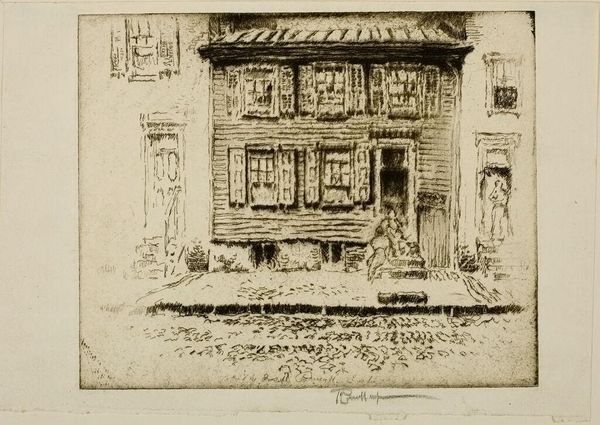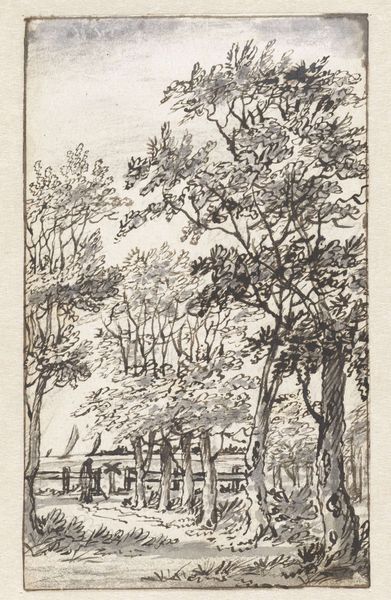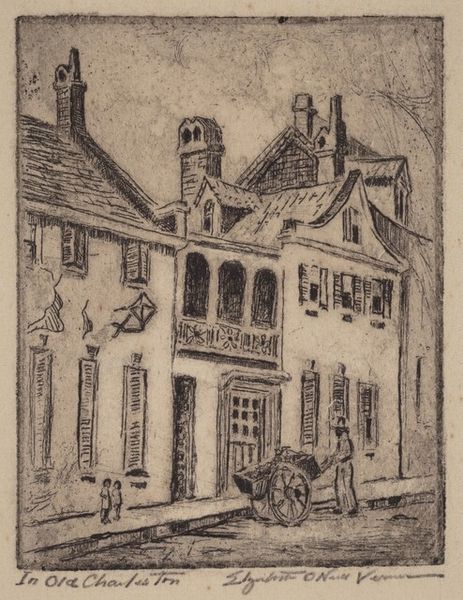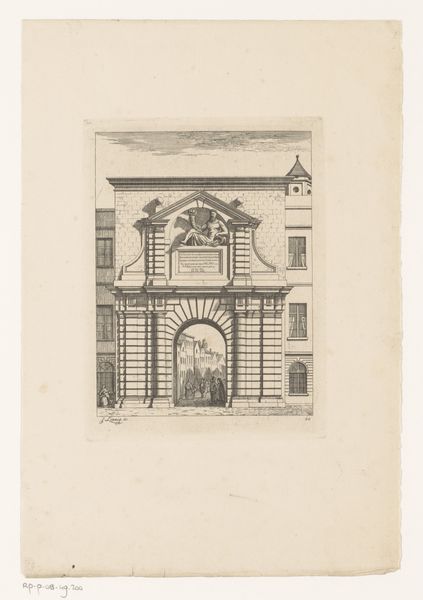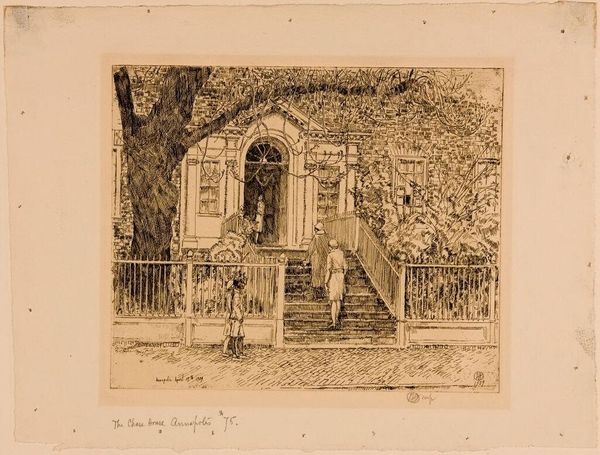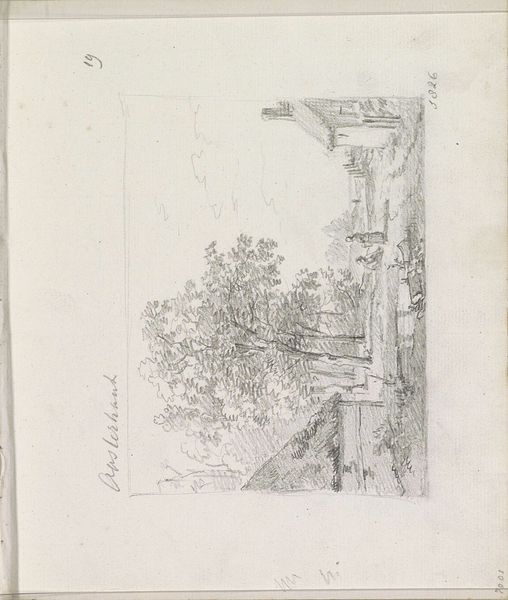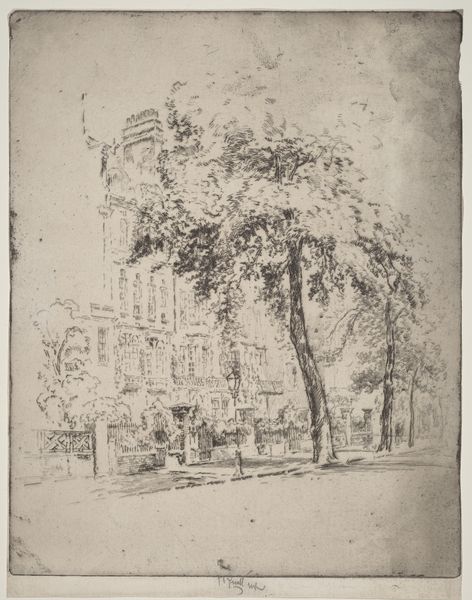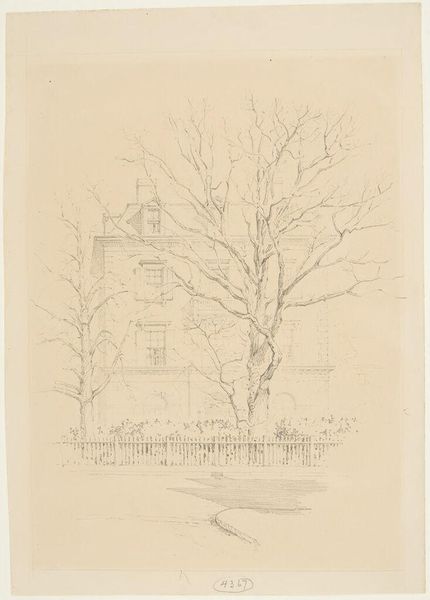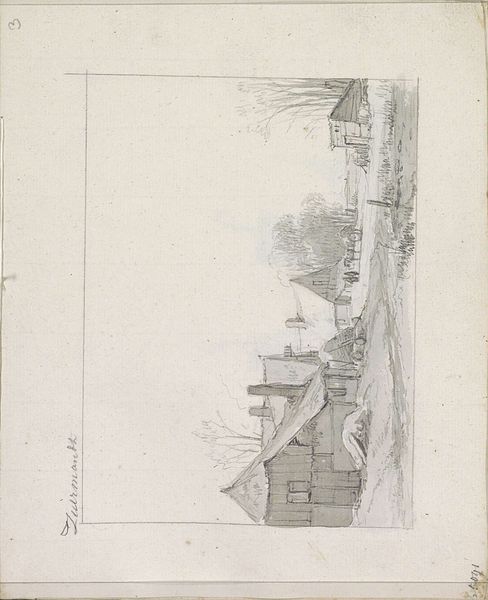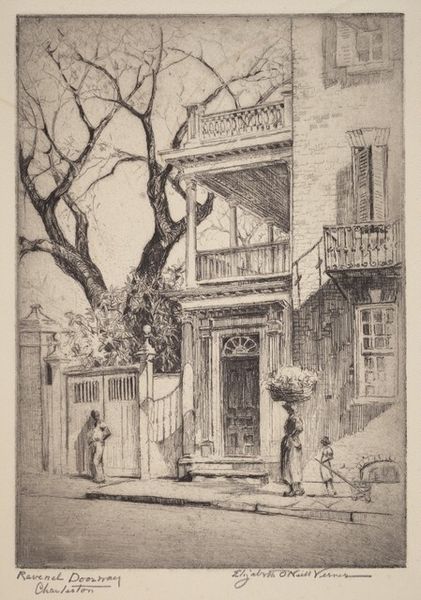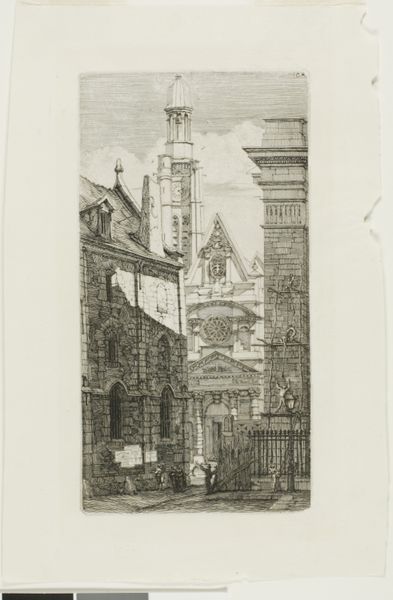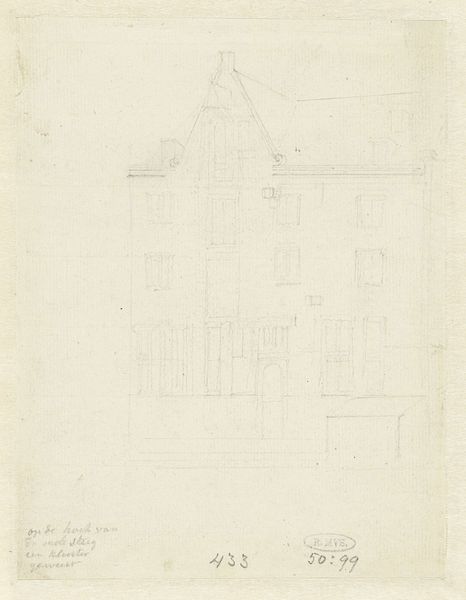
Copyright: CC-BY-NC-ND 4.0 DEED, Photo: Tate
Curator: Before us is "Turner's Last Home, Chelsea," a 19th-century print from the British School, held here at the Tate. The artist, born sometime in the 1800s, takes as his subject matter the final residence of J.M.W. Turner. Editor: It's remarkable how the artist has captured the weathering of the brick, and the rather dilapidated condition of the fence. It evokes a sense of melancholy, really. Curator: Indeed, the context is key. Turner, a celebrated artist, ended his days in relative obscurity under an assumed name in this very house. It highlights the relationship between artistic fame and its often fleeting nature. Editor: Considering the medium, it's interesting to see how the artist uses the line to suggest texture. Note the rough quality of the paper itself. One can imagine the artist carefully etching, layering the ink to build this image of a home falling into decay. Curator: Absolutely, and this print serves as a document of a specific moment in Chelsea's social history, capturing the architecture and atmosphere of the area during the 19th century. Editor: Seeing the house depicted so plainly makes you think about the artist's labor. The choice of this intimate, almost stark view, invites us to reconsider the idea of artistic legacy and the homes in which such creation occurs. Curator: It certainly gives us a new lens through which to view both Turner and the artist who memorialized his last days.
